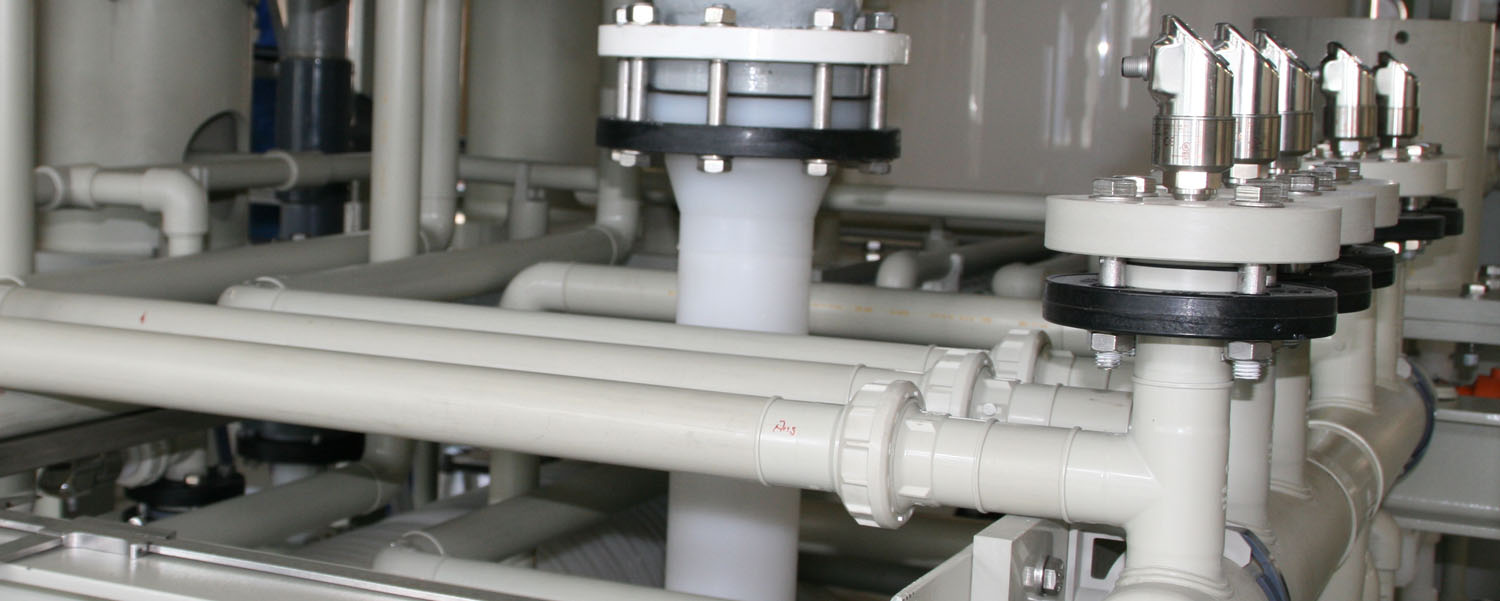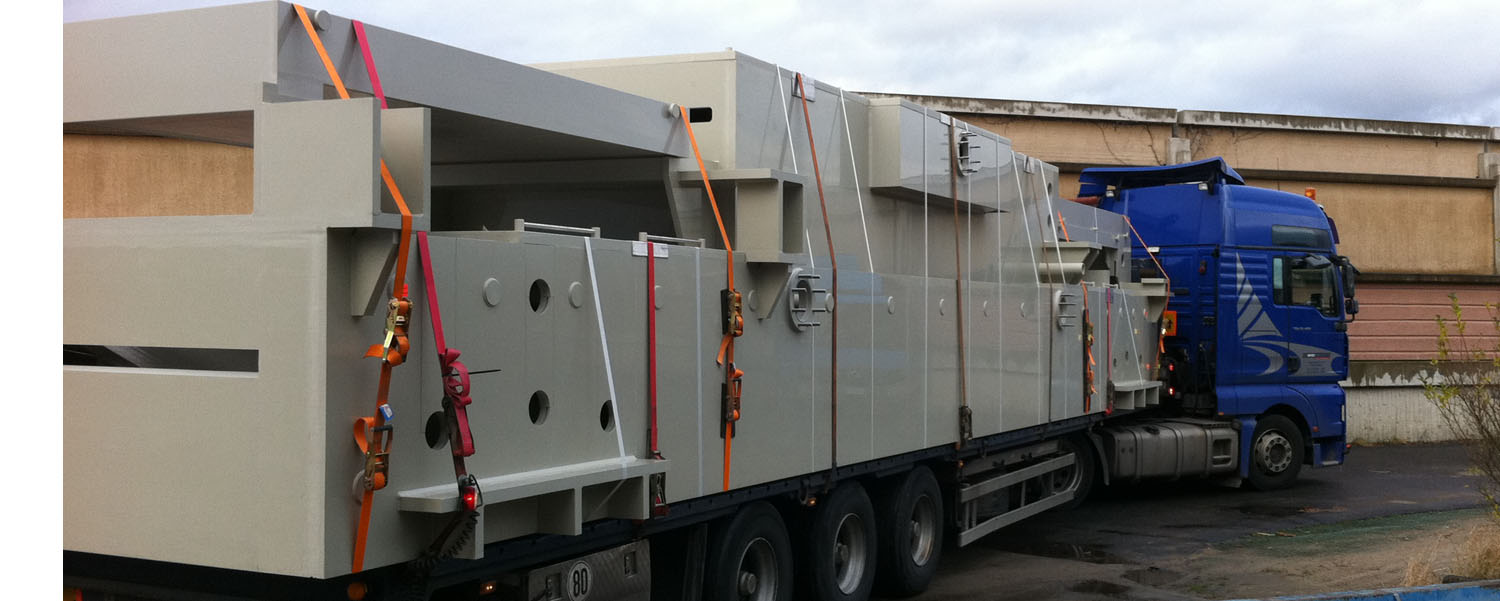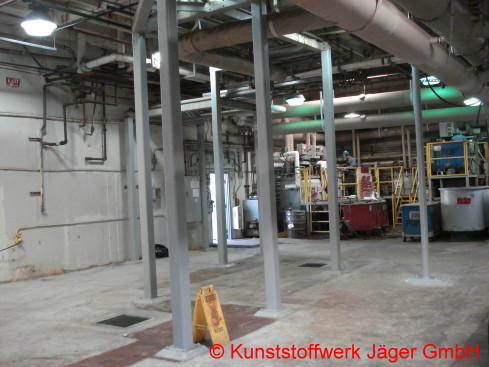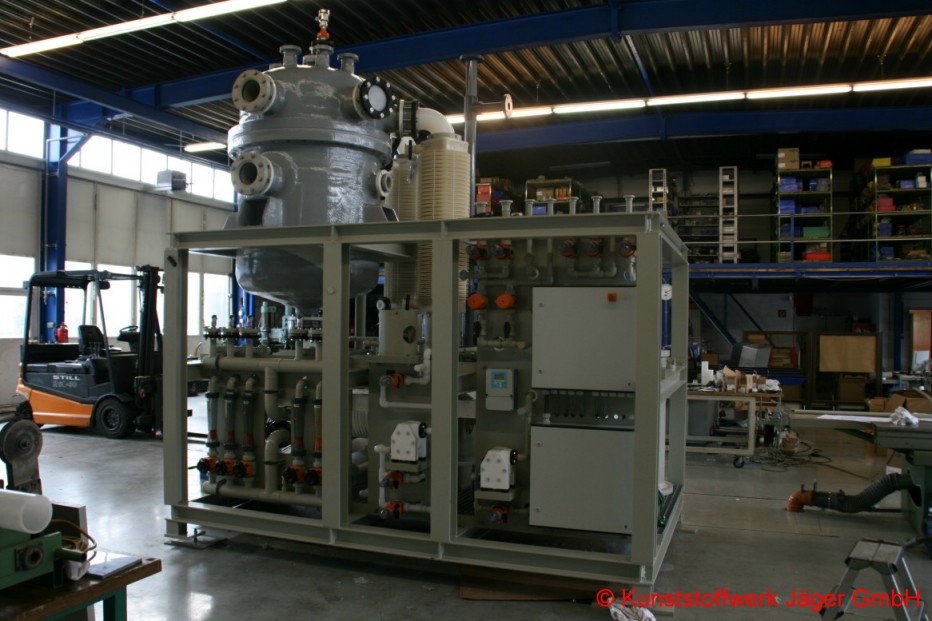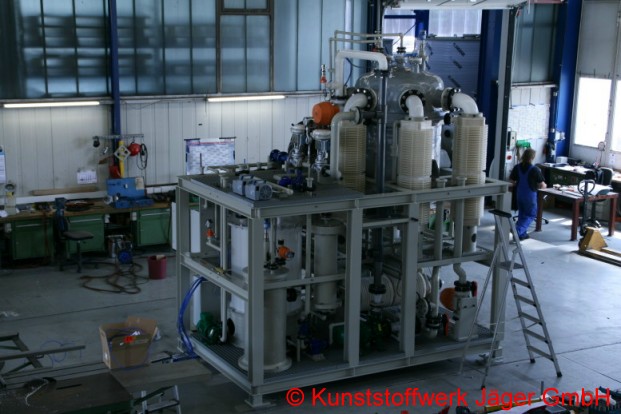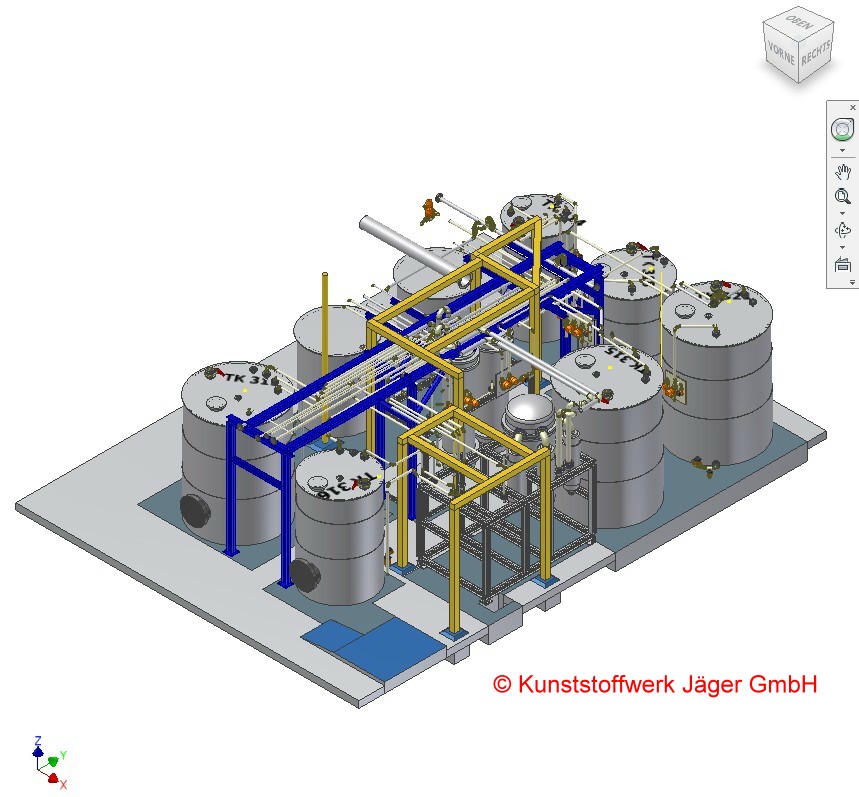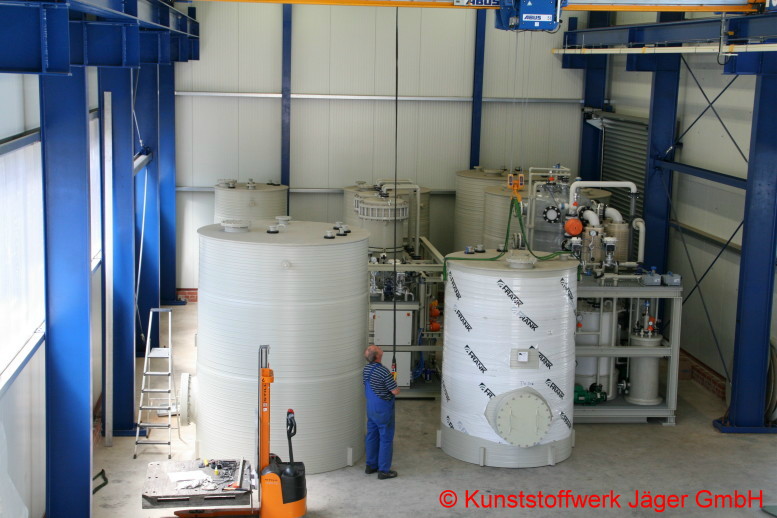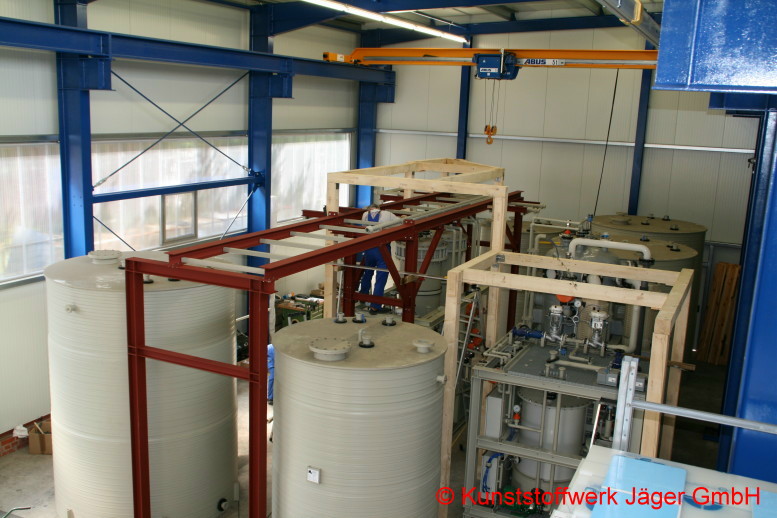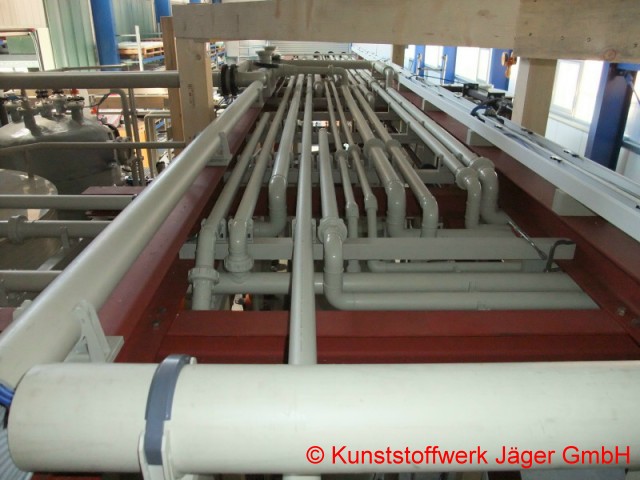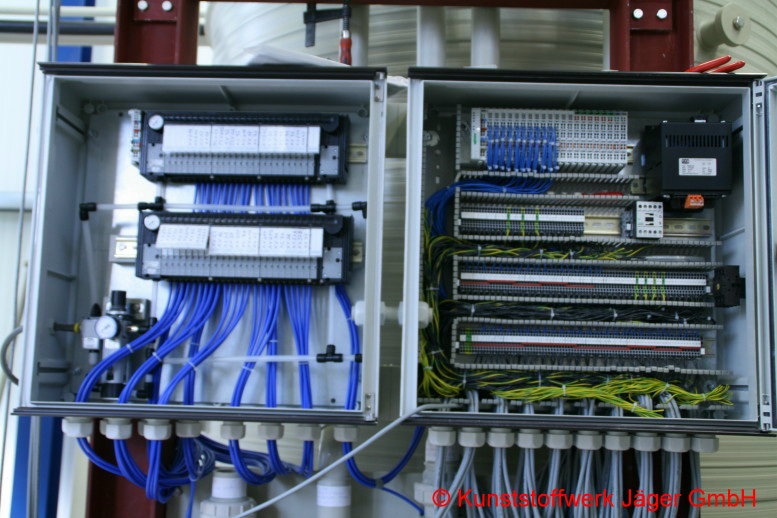In 2008 we received an order from an American customer to produce an evaporator system, an ion exchanger as well as seven tanks which were to be delivered to the US. We had already supplied this customer with an ion exchanger as well as tanks for a similar facility in 2006.
The customer had not been pleased with the way the installation had taken place in the 2006 project when assembly had been executed by local companies. It turned out to be very time consuming as well as expensive and the quality of execution was not always satisfactory.
With this in mind, we offered to install the entire system ourselves. Due to the economic crisis in 2008/2009, installation had to be laid on ice for the time being but we agreed to store the finished components for the system at our plant. To save time and money on site, we had the option of assembling the entire system for this project 1:1 here in our plant, including piping, pipe routes, instrumentation, electrical engineering and pneumatics.
Money for this project was available again the beginning of 2010. We received the order and began with the piping. Since we had been quite sure that the order would be forthcoming, we had already begun 3D planning the end of 2009.
Local conditions at the site where the system would be installed had been precisely measured and recorded in advance. We reconstructed the relevant geometries that would interfere in some areas, such as the existing pipe supports and routes, in our shop with squared timber.
Since this was the first time that we developed a complete evaporator system, we carried out a performance test with this system in Braunschweig first to make sure that it would meet specifications. Our heating facility supplied the necessary energy and two tanks served as cooling water reservoirs. This allowed us to simulate approx. 33 % of the system’s capacity which gave us a good basis for extrapolation. Within just a few hours we were able to achieve the planned evaporator capacity.
The entire system was packed in two, 40-foot, oversea containers on a flatrack and transported to the US west coast.
During the first week, all of the system components, including the pipe route, were set up. In the second week the pre-fabricated piping as well as electrical engineering and pneumatics were assembled.
While the project in 2006 had taken 4 months to assemble, we were able to set up the system on site in just 4 weeks. This was followed by commissioning over a period of 14 days.



